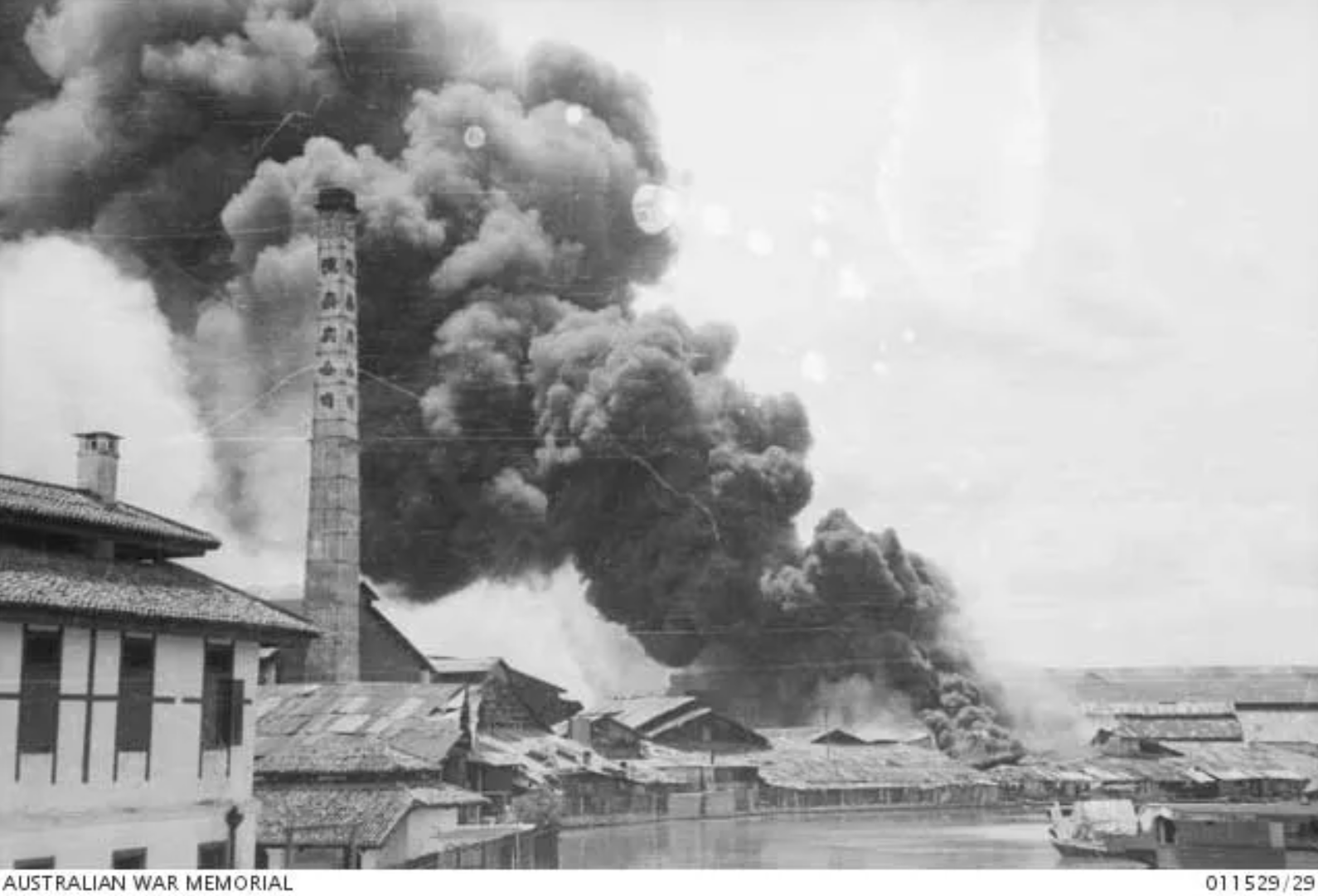Singapore's 'Dunkirk' 1942
The massacre of 21 Australian nurses on a beach on Bangka Islands following the sinking of the SS Vyner Brooke, had everyone outraged that such a thing could happen. But the sinking of the Vyner Brooke was not an isolated incident. In an operation that would be described as Singapore’s ‘Dunkirk’, the incompetence of the British led Allied High Command in Singapore was evident and many people died as a result.
It was clear when the last of the Allied forces crossed back onto Singapore on the 31st January 1942, that a miracle was needed for Singapore not to fall into Japanese hands. On the 8th February, the Japanese Army commenced their invasion and within 2 days established a foothold on the island. The city of Singapore was subject to continual bombardment, fires raged unchecked and generally it was a seen of carnage and chaos.
Most of the women and children who had wanted to go, had been evacuated from Singapore before the end of January 1942. But there was quite a number of small to medium size boats, including river gunboats and motor launches, remaining. They were quickly made ready and crewed for further evacuations. With an estimated total capacity of about 3,000 personnel, a ‘pass’ system was arranged to designate those who were free to board these vessels. Army nurses were automatically included. But there was no sense of urgency for these vessels to depart Singapore.
In another blunder, on the 12th February, the naval personnel responsible for the coding and decoding of signals left Singapore after destroying their equipment and code books, effectively leaving the High Command with no ability to read messages.
Finally, and only when, the situation became more dire, it was decided that the boats must leave by the night of the 13th February, just two days before the eventual Fall of Singapore. They were to sail during the night and shelter in the cover of islands during the day, until arriving at Dutch held Southern Sumatra about 80 miles south of Singapore. However, the Japanese became aware of this plan and Radio Tokyo announced that they (the Japanese) would not allow another ‘Dunkirk’ to happen.
On the day of the 13th February, columns of evacuees formed in an orderly fashion to board their allotted vessel. As the Japanese Army tightened its grip around the city of Singapore throughout the day, Allied troops and civilians had to endure constant bombing and artillery shelling. The city was in flames and thousands of bodies littered the streets. As the last of the vessels prepared to leave, the situation at the wharf area became more chaotic as dozens of European and Eurasian civilian men as well as hundreds of Allied troops attempted to force their way onto these boats.
Location of Bangka (Banka) Strait - Click to enlarge
In all, about 47 vessels, either lightly armed or without any armed escort, escaped Singapore but the notion of freedom was short lived. A large Japanese fleet had assembled north of the Bangka Strait in the path of the escaping vessels. The Dutch knew of the fleet’s existence and tried to inform the High Command in Singapore, but with no way of decoding the Dutch message, it went unread. One by one, the vessels we attacked, either by air or ship. The Japanese showed no mercy. In many cases, those that had abandoned their sinking vessel, were shot in the water or had their life boat attacked.
A report shows that about 5,000 escaped Singapore, on this motley flotilla. Nine vessels were sunk by aerial bombing, 13 sunk by ship gunfire, three scuttled, 13 captured and seven were unaccounted for. Only, two vessels made it to their intended destinations. Only a little more than 1,000 are thought to have survived.
The plan to travel the 80 mile by night seemed likely for success. But procrastination by the British led High Command made it too late for the fleet of vessels to leave Singapore. That combined with the poor decision to evacuate all the coding/decoding personnel and thus leaving themselves without access to any communication was inexcusable. The delay in leaving Singapore, gave the Japanese fleet plenty of time to assemble and lay in wait and then prey on these near defenceless vessels resulting in the deaths of thousands of those on board.
Blog Source:
The Naval Evacuation of Singapore – February 1942, https://www.navyhistory.org.au/the-naval-evacuation-of-singapore-february-1942, Accessed: 12 February 2022
World War II in Pictures, https://www.worldwartwo.filminspector.com/3019/11/the-fall-of-singapore-in-1942.html







